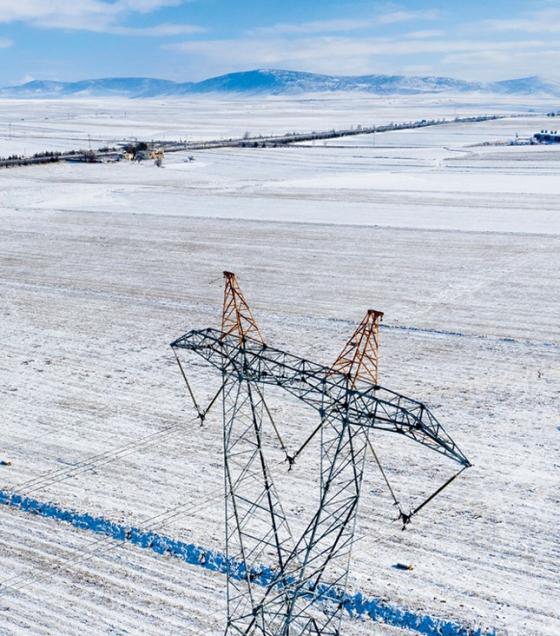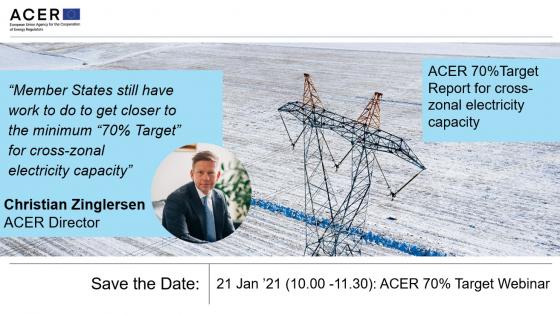ACER’s first 70% target report on the minimum margin available for cross-zonal electricity trade in the EU

How are Member States doing on reaching the minimum 70% cross-zonal capacity target?

What is the minimum 70% cross-zonal electricity capacity target?
Europe's Clean Energy Package (CEP) has set a binding minimum 70% target for electricity interconnector capacity for cross-zonal trading (the “minimum 70% target").
Why is monitoring the 'minimum 70% Target' important?
The lack of sufficient cross-zonal capacity is one of the main barriers to the integration of electricity markets, and market integration is key to deliver on Europe's energy goals. The CEP established a clear rule – namely a minimum capacity margin available for cross-zonal trade (MACZT), the 'minimum 70% target', to be met by all Transmission System Operators (TSOs). The more interconnector capacity that is made available for cross-zonal trade, the more trading that can occur.
The minimum 70% target is legally binding since the start of 2020, but Member States may also adopt transitory measures, such as action plans or derogations, thus allowing TSOs to reach gradually the minimum 70% target, by the end of 2025 at the latest.
ACER's monitoring aims to consistently identify the scope for improvement to meet the minimum cross-zonal capacity target, across the EU.
How are Member States doing? Efforts needed in all countries to reach the 70% target
ACER's first “70% Target Report" provides an overview of the current levels of margins for cross-zonal capacity compared to the minimum legally binding 70 % target for the first half of 2020, and on action plans and derogations.
ACER's 70% Target Report finds that:
Member States have much more to do to get closer to the legally binding minimum 70% target
The levels of margins for cross-zonal capacity is mixed across the EU.
Member States should work to meet the 70% minimum target at all times, and to reach their target national transitional targets to gradually reach the 70% minimum.
How? Members States can count on several measures at their disposal to improve the level of margin offered such as cost-efficient investments; use of remedial actions; and bidding zone reconfiguration, to help them to reach the target.
The levels of cross-zonal capacity are very diverse depending on the type of border and geographical location.
On high-voltage Direct Current (DC) borders, the 70% target was met most of the time but with a few notable exceptions.
On Alternating Current (AC) borders, there is a very diverse picture with significant room for improvement to meet the 70% target for most regions and borders.
ACER's monitoring depends critically on TSOs providing robust and extensive data. ACER acknowledges the efforts made by a majority of TSOs to improve the provision of data. However, the completeness and quality of this data needs to be further improved.
Regarding action plans and derogations, ACER finds significant room for further harmonising their setup across the EU. Regulatory authorities should grant derogations as a last resort measure, and only where necessary for maintaining operational security.
For consistency, national regulatory authorities (NRAs) should consider the results of ACER's analysis to assess the compliance of TSOs with the minimum 70% target.
Access to the ACER's comprehensive Report and detailed Annexes
What's next?
ACER 70% target webinar: Thursday, 21 January 2021 (10.00 -11.30) - Registration are now open!


